We use cookies to make your experience better. To comply with the new e-Privacy directive, we need to ask for your consent to set the cookies. Learn more.
Mistakes I Made When I Got Into Eurorack
Introduction
When I first began my modular synth journey, I had no clue what I was doing. Now mind you, it wasn’t because I was unfamiliar with synthesis. In fact, I was well-versed in sound design. My first synthesizers were the Access Virus TI2 and Roland V-Synth—neither were “simple” synths. Instead, both share complex menus, matrix routing, and effects engines, to name a few. To this day, I spend hours programming the Virus and V-Synth, as well as other complex synths, for hours until I get a “good” patch. So why did I have such a hard time at the beginning of modular synthesis?
MISTAKE #1: Buying a case that I would soon outgrow.
I underestimated how quickly my system would grow. At the time, I looked at my budget and decided on a Doepfer low-cost wood case. It had a total of 252HP or 3 rows of 84HP. For some readers, that may sound like a sizable case, and it is! With proper planning, I would be able to obtain all of the modules I needed. The problem was it didn’t take long to buy more modules I had space for. The worst culprits were the large modules over 8HP, leading me to my next mistake…
MISTAKE #2: Buying large modules when I had a small case.
Back then, I owned the Doepfer A-155 Analog/Trigger Sequencer (50HP), the Doepfer A-188-2 Tapped BBD (30HP), and the Vermona Quad qMI (24HP). The combined total of the three modules was 84HP! That was once an entire row of the rack. The obvious solution was not owning such large modules when my case was relatively small. However, I obtained the three monster modules very inexpensively on the used market—likely because they are too large to fit in the majority of systems.
MISTAKE #3: Only have a single-minded approach to eurorack.
As I stated before, I understood the principles of synthesis. I had several “monster” synthesizers in my studio. However, I didn’t understand the purpose of modular synths. At first, I treated my eurorack like my other keyboards and used it as a mono/poly synth. Then, like my other instruments, I arranged my parts with MIDI using a DAW. What I didn’t understand was the creative power of randomness. I was unfamiliar with generative music, advanced sequencing, and unexpected sources. I composed linearly. There is nothing inherently wrong with a linear approach. However, my composition style pigeonholed me to a particular musical style. As a result, I focused on buying “practical” modules. These include plain VCAs, VCOs, basic filters, and simple envelopes. I had no source of randomness and limited sequencing. In other words, my eurorack system was boring. I found it more cumbersome to use than my keyboards. So I did not use it often. That is until I made a drastic change…
MISTAKE #4: Buying modules with no plan.
Once I realized my case was lame, I bought every cheap, used module I could find on eBay. (This was the days before Reverb.com). Soon I had a much larger case with entirely different modules, but they did not go well together. It was not until I discovered Modulargrid.net that I realized I could plan my case ahead of time.
MISTAKE #5: Building your own case but under-powering it.
Once my Doepfer low-cost case was filled, I built my own to save money. I bought enough rails to construct a monster-sized case, a total of 672 hp. Admittedly, the case build went reasonably well. I was pleased with the overall aesthetic once it was complete. What did not go well was the power supply and power distribution.
At the time, there were few options for commercially made bus boards. To save on cost, I decided to make my own. I started out with prototype boards from Radio Shack. The effort proved to be fruitless right away. My next try was etching my own circuit boards. It was a better solution, but the end result was not impressive. I used the homemade boards for many years, but I eventually replaced them with these. I can be more at ease that my case will not catch fire.
For the power supply, I originally bought a small, low-cost switcher. However, I began to have power issues after filling the case half full. In addition, I miscalculated how much power I needed for such a large case. The other problem with the particular switching supply I chose was the instability of my oscillators. In the end, I scrapped the switcher and found an enormous, beefy linear supply with a transformer that doubles as a boat anchor.
Final Thoughts
Since my first cases, I have more carefully cultivated my eurorack setup. I have a eurorack case that I (hopefully) will not outgrow, given the purpose of how I want to use my eurorack and have a solid power distribution throughout the case. Modular Grid has been my friend as I have been slowly adding and removing modules over the years. I still like to make my own cases, but I am much more particular about my power supply. Analog oscillators need stable power to function correctly.
You can find all of Stoel Music System’s eurorack modules at modulargrid.net/e/vendors/view/1033.
